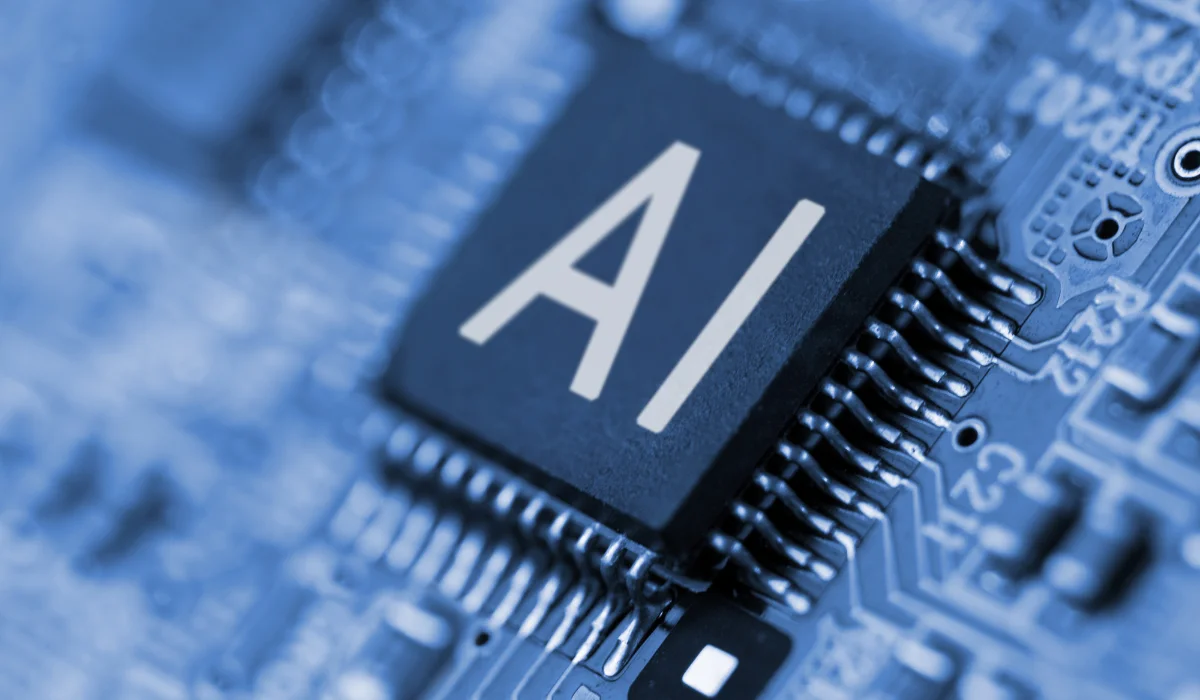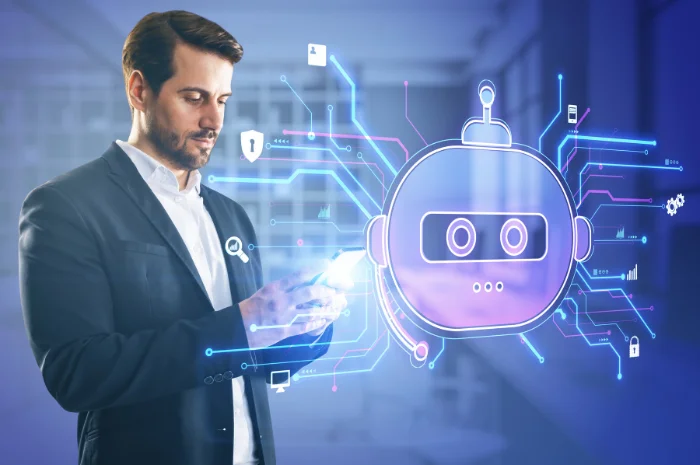Smart businesses are no longer asking “Should we use conversational AI?” They’re asking, “Where can we integrate it to create the most value?” And that shift is what’s driving the demand for integration services, not just access to ChatGPT, but the ability to make it work in context, at scale, and securely across the enterprise.
What Are ChatGPT Integration Services?
Let’s clear something up: using ChatGPT and integrating ChatGPT are two very different things.
Most teams start with experimentation, maybe embedding ChatGPT in a chatbot or trying it through a browser. But real value shows up when ChatGPT becomes part of your systems, not just something that sits beside them.
ChatGPT integration services are exactly that. They connect this Open AI’s powerful language model to your internal tools, workflows, data, and interfaces, so it can work for your business, in real time, with full context.
What Do These Services Typically Involve?
- API Integration: Seamlessly connecting ChatGPT to platforms like CRMs, ERPs, ITSMs, Slack, or Microsoft Teams.
- Workflow Automation: Triggering intelligent responses based on real-time data or user actions.
- Custom Prompt Engineering: Tailoring ChatGPT behaviour to align with your brand voice, compliance rules, and business logic.
- System Orchestration: System Integration: Linking ChatGPT with internal systems such as databases, service desks, knowledge repositories, and reporting tools to ensure it can access and relay relevant information in real time.
- Security & Governance Setup: Managing access, ensuring data privacy, and meeting enterprise-grade security standards.
Where Does It Plug In?
- Customer support tools (Zendesk, Fresh desk)
- Internal portals (SharePoint, Confluence)
- Collaboration platforms (Slack, Teams)
- Custom mobile apps and web interfaces
- Knowledge systems and intranets
The Outcome?
ChatGPT stops being “just a chatbot” and starts acting like a virtual team member, answering questions, finding information, drafting content, or resolving issues, all within the tools your teams already use. This integration isn’t just about convenience. It’s about unlocking intelligence across your business without reengineering everything.
Core Benefits of Integrating ChatGPT in Your Business
When ChatGPT is integrated into your systems, not just used as a standalone too, it changes how communication flows within your business.
 1. Instant, Intelligent Responses Across Channel
1. Instant, Intelligent Responses Across Channel
Integrated ChatGPT can answer queries directly within tools like CRMs, helpdesks, or messaging platforms. Whether assisting a customer or supporting an internal team, it delivers the right information without delay or escalation.
2. Reduced Load on Support and Ops Teams
By taking over repetitive and predictable interactions, ChatGPT allows human agents to focus on tasks that require judgment, empathy, or problem-solving. This creates a more balanced workload and avoids burnout in high-volume environments.
3. Consistent and Controlled Messaging
AI doesn’t vary its tone, forget policy language, or skip compliance phrasing. With properly engineered prompts and access controls, ChatGPT ensures that every response aligns with your communication standards across all teams and time zones.
4. Unified Access to Knowledge
Instead of digging through documents or switching between tools, users can ask a question and get instant, contextual responses, even if the data lives across systems. ChatGPT acts as a conversational interface to your organization’s collective knowledge.
5. Native Multilingual Capabilities
With built-in translation and language support, ChatGPT makes it easy to engage with global customers or multilingual teams, without the complexity of external localization tools or manual effort.
These benefits of integrating ChatGPT scale with your business. As your systems evolve, so does the potential of an integrated conversational layer that works in the background and speaks your enterprise’s language.
Where Businesses are Integrating ChatGPT
ChatGPT integration isn’t limited to customer support, it’s increasingly becoming a cross-functional asset. When embedded into enterprise systems, it brings a measurable impact across departments by streamlining interactions, reducing delays, and making information instantly accessible. Here’s how different teams are using ChatGPT today:

-
Customer Service & Support
Integrated into helpdesks or web portals, ChatGPT handles FAQs, order status updates, return policies, and more, without agent involvement. It can also escalate complex issues with full context, so handoffs feel seamless and informed.
-
Human Resources
From answering employee queries about leave policies and benefits to supporting onboarding processes, ChatGPT can act as a 24/7 HR assistant. It reduces dependency on manual HR ops and improves employee self-service experiences.
-
IT Helpdesk
ChatGPT can resolve common technical issues, guide users through troubleshooting steps, and log tickets, all without IT staff needing to step in for basic tasks. It also integrates with ticketing systems to keep records updated automatically.
-
Sales Enablement
Reps can use ChatGPT as a real-time assistant during calls or demos. It can pull up product specs, pricing details, competitor comparisons, or recent case studies, improving response quality without interrupting the conversation.
-
Internal Communications & Knowledge Access
Instead of searching through wikis, policy docs, or email threads, employees can simply ask ChatGPT. Integrated across platforms, it acts as a dynamic front-end to your internal knowledge base, easy, quick, and consistent.
Best Approaches & Practices for ChatGPT Integration
Integrating ChatGPT into enterprise systems requires more than just technical compatibility. It’s about fitting AI into your business logic, infrastructure, and day-to-day workflows in a way that’s secure, useful, and scalable.

-
Choosing the Right Integration Path
There are typically two routes:
- Direct API integrations, which offer flexibility and customization, are ideal for businesses with specific workflows or in-house development teams.
- Pre-built connectors are often available through enterprise platforms like Microsoft Teams, Salesforce, or ServiceNow. These are faster to implement but may be limited in adaptability.
The right choice depends on your internal capabilities, the complexity of your use case, and how tightly you want AI woven into your operations.
-
Designing Around Your Existing Ecosystem
AI should reduce complexity, not introduce new silos. Integrations work best when ChatGPT is embedded in the tools people already use, whether that’s a CRM, ticketing system, or internal chat app. Start by mapping where conversations happen and identifying high-friction areas where response delays or information gaps exist.
-
Addressing Governance from the Start
Security and data governance are central to any AI deployment. Enterprises need to consider how user prompts are handled, what data is shared with the model, and where information is stored. Role-based access, prompt auditing, and compliance alignment (especially in regulated sectors) are critical to building trust in the system.
-
Customization Is Not Optional
Generic outputs won’t cut it in enterprise settings. You’ll need to customize the assistant’s tone, access level, and responses, often through prompt engineering, context injection, and knowledge base integration. The AI should reflect your organizational voice and understand the boundaries of what it can and can’t answer.
-
Start Small, Scale With Feedback
It’s wise to begin with one focused use case, like automating Tier-1 IT support or internal HR queries. Pilot, measure impact, gather feedback, and iterate. Scaling becomes easier when stakeholders already see tangible results.
How to Evaluate ChatGPT Integration Partners
If you’re not building in-house, your choice of ChatGPT integration service partner plays a major role in your success. Here’s what to look for:
 Technical and Product Familiarity
Technical and Product Familiarity
Beyond basic API calls, your partner should understand how ChatGPT functions within enterprise environments, including token limits, prompt structures, session memory, and system integration. Ask how they manage things like:
- Prompt contextualization
- Fine-tuning for tone or intent
- Multi-system orchestration (e.g., syncing with CRMs, helpdesks)
Industry Knowledge
Every sector has unique workflows, terminology, and compliance requirements. A ChatGPT integration service provider who has worked in your industry will be able to preempt issues, propose relevant use cases, and align AI behavior with real business scenarios.
Experience With Enterprise Systems
Look for providers who can integrate AI within complex environments, whether it’s Microsoft 365, legacy ERP systems, cloud-native SaaS platforms, or bespoke internal tools. They should understand authentication protocols, data flow mapping, and enterprise change management.
Scalability and Ongoing Support
Your first use case won’t be your last. The partner should offer a long-term roadmap, not just a one-time setup. Support for testing, monitoring, content updates, and retraining is vital to keeping the AI aligned with your business as it evolves.
Final Takeaway
Most enterprises aren’t short on communication tools, they’re short on tools that can think, respond, and adapt at scale. That’s what ChatGPT brings to the table when it’s properly integrated: a way to make conversations across departments faster, more intelligent, and less dependent on manual effort.
But the technology alone won’t deliver results. Real impact comes from thoughtful implementation, connecting ChatGPT to your systems, customizing its behaviour, and ensuring it works in harmony with how your teams operate.
Hire our experts, if your organization is looking for ways to improve responsiveness, reduce routine workloads, or unify knowledge access.



